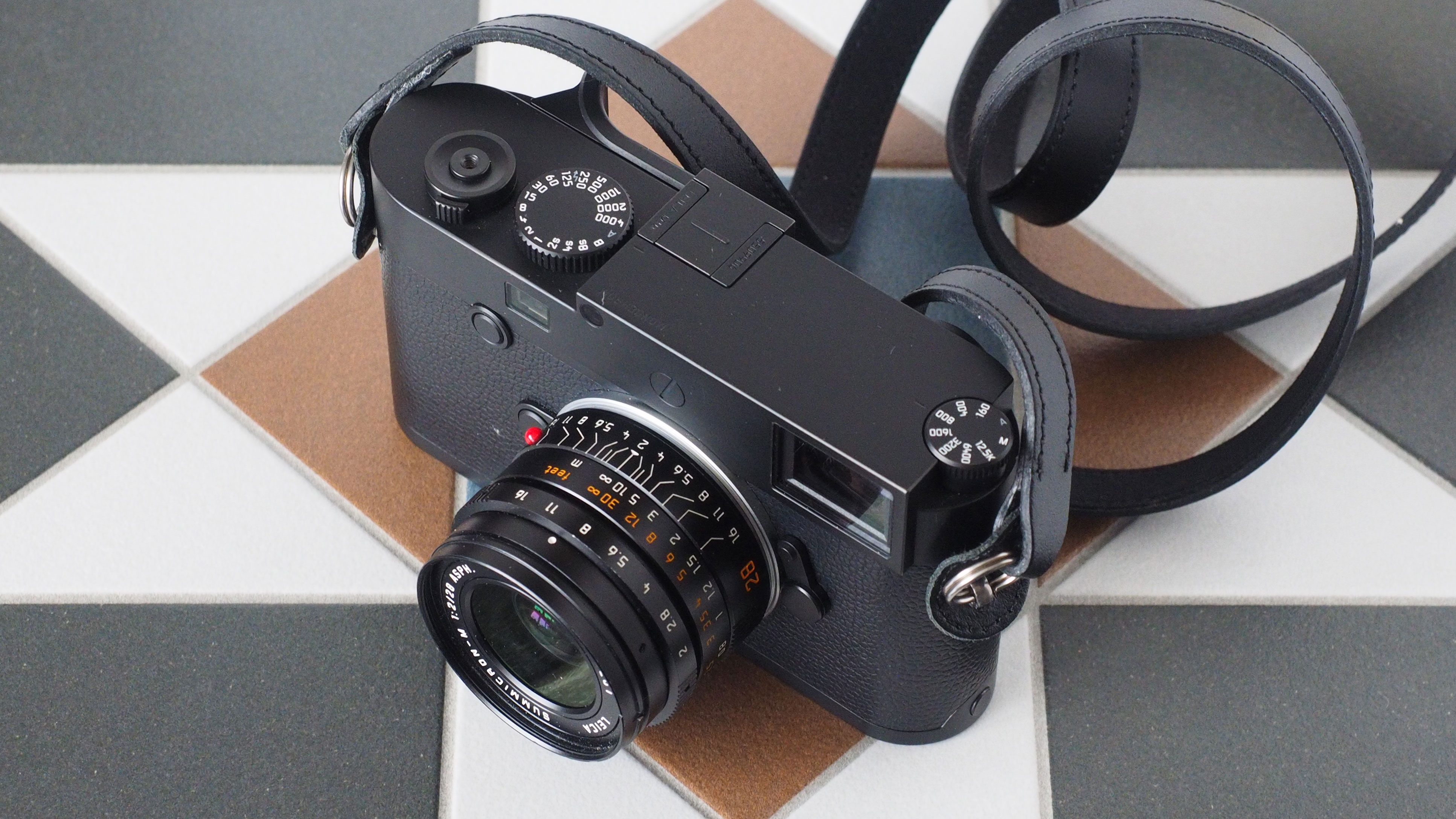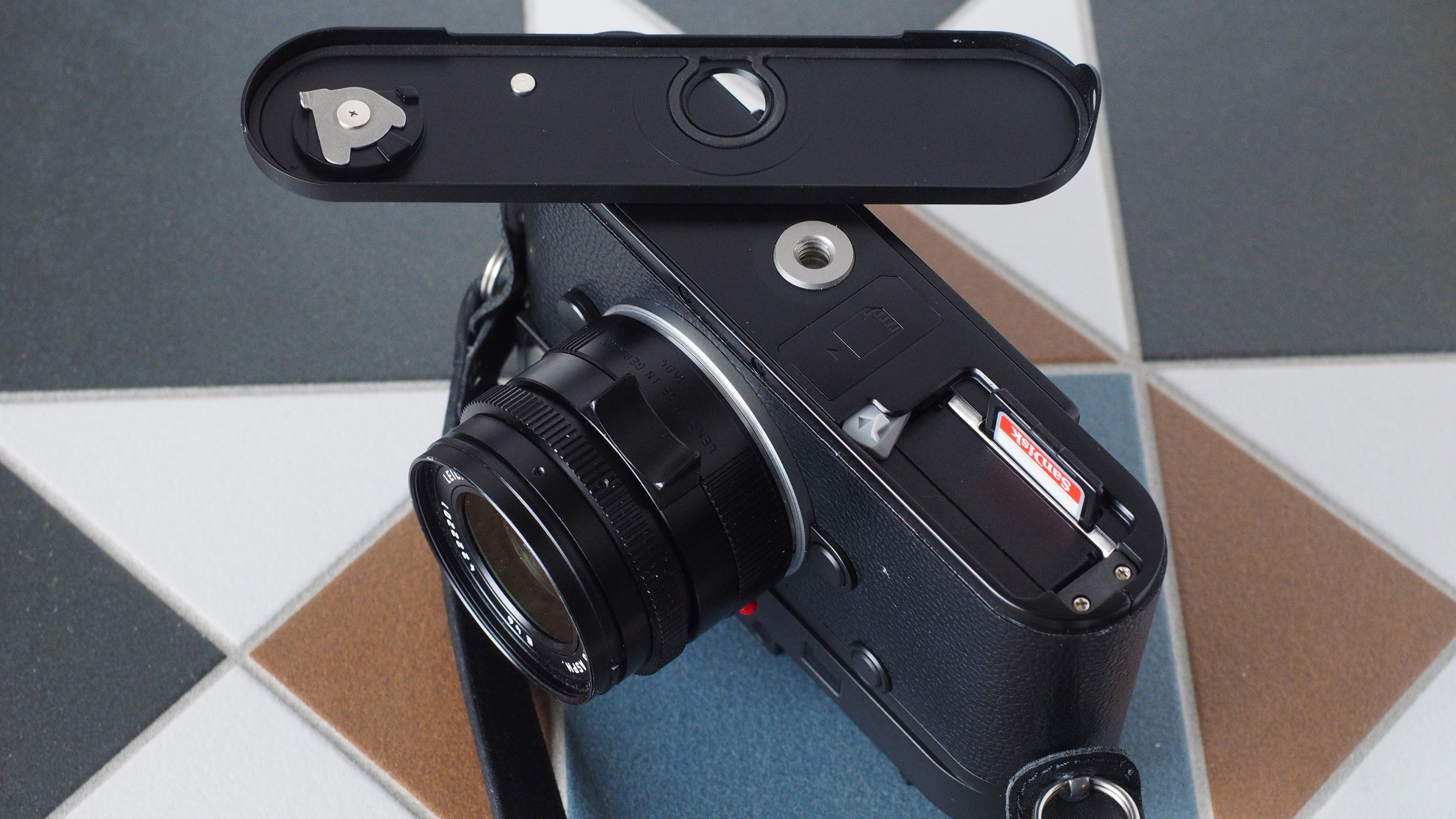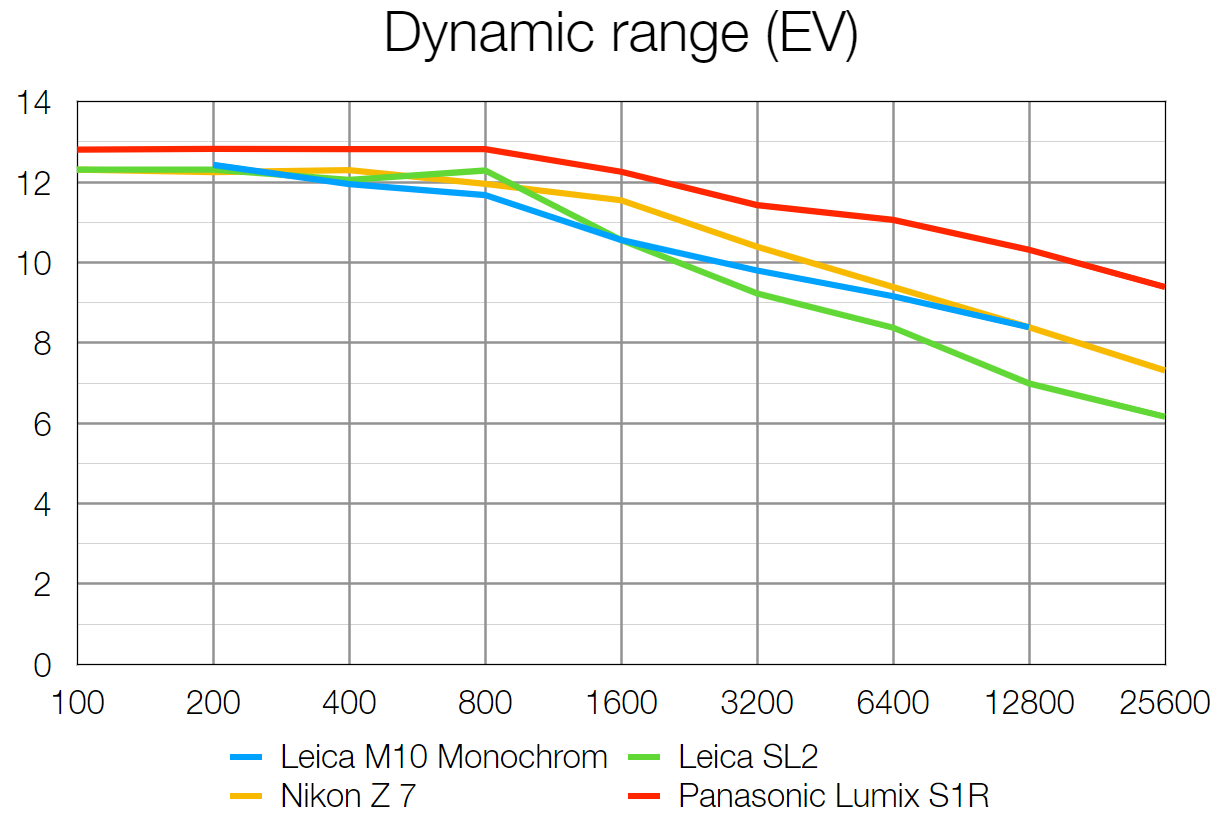Digital Camera World Verdict
This is a camera that simplifies the picture taking process, and forces you to concentrate on one thing. It may seem like an anachronism, but the Monochrom drives you towards seeing, composing and shooting images in a very different way. It makes no concessions to novices, and it's up to you to make the effort to master it. That alone will divide opinion... though not as much as the price.
Pros
- +
Classic Leica design
- +
Traditional rangefinder focusing
- +
Touchscreen LCD with LiveView
Cons
- -
No option for color shooting
- -
No autofocus or video
- -
Cost
Why you can trust Digital Camera World
The Leica M10 Monochrom is remarkable for three reasons. The first is its use of a decades-old manual focus rangefinder design. The second is that it shoots only in black and white. The third is a price tag higher than any other M-series camera except for Leica's prestige special editions. What's going on?
Only Leica could be bold enough to make camera that shoots just in black in white. When the German company first introduced the first Leica M Monochrom in 2012, many imagined that it was just one of Leica's special editions that would fade away as soon as it had arrived.
But now in its third full interation, and with various special editions along the way, the Leica Monocrom dynasty as established a news class of camera. The Monochrom recreates the feeling of yesteryear when top documentary photographers went out with a rangefinder camera with one or two prime lenses, and roll of black and white film.
The latest in the line is the Leica M10 Monochrom, which supercharges this line's capabilities by adding a high-resolution 40 megapixel sensor specially designed for this camera, and which does without the usual color and low pass filters of rival mirrorless and DSLR cameras.
Technically, this is a mirrorless camera, but it's way too specialized to make it on to our list of the best mirrorless cameras, and neither is it pitched at the professional camera market. Instead, the Leica M10 Monochrom is for photography connoisseurs and auteurs, for whom the experience and the heritage is more important than the money. In that respect, the Monochrom certainly qualifies as one of the best Leica cameras today.

Specifications
Sensor: 40MP full frame CMOS sensor without color or low pass filters
Image processor: Maestro
AF: None. Manual focus only via rangefinder triangulation and focus peaking in live view
ISO range: 100 to 100,000
Max image size: 7840 x 5184 JPEG, 7864 x 5200 DNG
Viewfinder: Optical direct vision (not TTL)
Metering modes: Multi-field, centre-weighted, spot
Video: N/A
Memory card: 2GB internal 1x SD / SDHC / SDXC
LCD: 3-inch fixed touchscreen, 1,036,800 dots
Max burst: Not quoted
Connectivity: Wi-Fi
Size: 139 x 38.5 x 80mm
Weight: 660g (body only, with battery)

Key features
Let's start with the sensor. The Leica M10 Monochrom has a custom-made 40-megapixel monochrome full frame sensor with no low-pass filter and – crucially – no color filter array. This means that each photosite captures only luminance (brightness) information, which in turn means that its images do not require the color interpolation needed with the red/green/blue pixel 'bayer' sensors used by almost all other cameras.
This is not like the 'black and white' mode on a regular camera. It's not like an ordinary camera with the color 'disabled'. Regular RGGB bayer sensors create processing artefacts you can't remove, even if you convert to black and white. This sensor does not. So what might seem like deliberate perversity – a camera restricted purely to black and white – actually has a very important very technical basis.
With a regular camera, you can adjust the red, green and blue channels to simulate the effect of tradition black and white filters, but you will get channel noise and artefacts which get worse with the strength of the adjustment. With the M10 Monochrom, if you want black and white 'contrast' filter effects, the only way is to screw actual filters on to the front of the lens – but you will not get any channel noise/artefacts when you do it. It's like a return to the old days of black and white photography.
Also like a return to the old days is the rangefinder focusing. There is no AF on this camera. Instead, you focus using a direct vision viewfinder and a secondary 'ghost' image that you line up with the main image by turning the focus ring on the lens. The rear screen does offer a live view with a focus peaking option, but it's still manual.
We should also mention the Leica M bayonet mount, the quality of the Leica M lenses and their cost (high). They might be expensive, but these Leica lenses are so small that you wonder how modern mirrorless lenses got so big.
And there's no video mode. At all. If that's what you want, you should look at the mirrorless Leica SL2 instead, or maybe one of the Leica D-Lux collaborations with Panasonic (essentially premium Panasonic compacts rebadged and reskinned for Leica).

Build and handling
This camera is unmistakably a Leica, with a solid, heavy metallic body that looks and field that it is precision engineered, and hand assembled, and that might even be worth its reassuringly expensive price tag if you're feeling generous. It's not actually that heavy by modern camera standards, at just 660g, but the body is quite small, which makes it feel very 'dense'.
Interestingly, the Leica branding is left off this model. There is no red dot, no Leica logo on the top plate, and no color on the dials. This is as subtle as you can get... but the classic rangefinder design and Leica M-range looks still make it obvious that this camera has come from Wetzlar.
The dials are all mechanical. This means you can set up the ISO, choose an aperture and shutter speed setting (manual or auto), even before the camera is turned on. For anyone raised on old film cameras, this might even bring a tear to your eye. It's how cameras used to be, when all you had to do was focus and set the shutter speed and aperture.
The focusing is completely manual, whatever lens you use. The rangefinder focusing viewfinder is something that takes some getting used to if you have not used this before... as you use the central area to get a secondary ghost image to line up precisely with the main viewfinder image. In reality, many users of this camera use a zone focusing system, setting up the camera in advance for subjects a particular distance. That's made SO MUCH easier by Leica's M-mount prime lenses, which have long focus travel, detailed focus scales and depth of field index markers.
An alternative technique, shared with the Leica M10-P from which much of this camera's design is borrowed, is to use the three inch touchscreen LCD in LiveView mode to critically adjust focus so that you know that it is locked on precisely. This is slower and less precise than you might hope. The focus peaking appears somewhat indiscriminate, showing some pixellated 'peaking' even when your subject is clearly out of focus.

Our advice? Stick to the rangefinder focusing. It's what this camera was built for, and if you're prepared to put in the time honing your skills, it's fast and effective and actually steers you towards a different way of shooting.
That's what's interesting about Leica M cameras. They are definitely not easy compared to modern cameras. They demand skill, attention and precision. But once you've learned how to work them, they do make you see and shoot the world differently.
One of the other handling quirks of this family of camera is that you have to remove the baseplate entirely to access the single SD card slot, or the battery... You have to hold the metal plate somehow as you swap cards, and our top tip here is: DON'T LOSE IT. We haven't checked the price of a replacement, but we suspect it's going to be A LOT.

This design quirk is a throwback to film-based M models, where you removed the baseplate to load a film. It persists as a kind of modern digital 'homage' to the old design, which is charming in one way but decidedly irritating in another.

Performance
The key advantage of the new version of the Monochrom is its massive resolution. It has a 40.8 megapixel sensor which has been specially designed to shoot black and white, so doesn't have to use color filters, or demosaicing algorithms to make its image. Each photosite directly corresponds to the resulting pixel, and that should mean a jump in effective resolution compared to color sensors. And there is no anti-aliasing filter either, which boosts out-of-camera sharpness.
The 40 megapixel resolution may seem like overkill for a camera that primarily appeals to documentary and street photographers, but the added detail means that you have much great ability to crop your images (compensating for the fact that you will probably use this camera with a prime lens).
We have spent some time with this camera, first of all at the camera's unveiling in London's Covent Garden and subsequently during lab testing and our own shooting expeditions. We've been impressed by both the detail rendition and the dynamic range and processing latitude of the Leica M10 Monochrom and its sensor.
A disadvantage of a black-and-white only sensor, is that you can't use the color channels to boost and darken certain tones/ You can't use the blue channel in the image, for instance to darken skies because there are no separate color channels. However, when processing the image there is something nostalgic of essentially using old-school dodging and burning techniques to shift emphasis and pull out detail from the files. This is as relevant for today's black and white images as it was in the days of film. The capture technology may have changed, but the essentials of black and white imagery and composition have not.
With that in mind, we're showing both unedited and edited images below. Just as a black and white photographer in the past would rarely be satisfied with a 'straight' darkroom print, we wanted to show the potential of the Monochrom's DNG raw files, not just straight-from-camera JPEGs.






The images above were all straight from the camera JPEGs. We also spent some time with the Monochrom's DNG files to explore their processing latitude and apply some traditional darkroom techniques to bring this out.
Leica uses the generic Adobe DNG format for its raw capture, and DNG stands for 'Digital Negative'. We think that's the best way to think of the Monochrom's raw files – as 'negatives'.
At first glance, they appear no better or worse than any other camera's black and white renditions. In fact, the Monochrom's exposure metering is archaic by today's standards, taking a reading reflected off the first shutter curtain in the camera body. Even in 'multi-field' mode, it's strongly influenced by bright skies in outdoor shots and dramatically reduces the exposure to compensate – in these conditions the Monochrom's straight-from-camera exposures are often way too dark to use directly.
The upside is that images are never at risk from highlight burn-out, and there is huge depth of detail in the shadow areas that you can bring out during raw processing – this combination means the Monochrom's raw files come as close to the darkroom latitude of old black and white films as you're likely to get with a modern digital camera.




Lab Tests
For this comparison, we compared the lab tests from the M10 Monochrom with those of three rivals with similar resolution: the Leica SL2, Nikon Z 7 and Panasonic Lumix S1R.
Resolution

Despite 'only' packing a 40MP sensor, the M10 Monochrom manages to resolve an equal amount of fine detail to the current crop of 47MP cameras, and produces marginally clearer images at its maximum sensitivity.
Dynamic range

The M10 Monochrom's dynamic range is good, mostly matching its Leica SL2 stablemate. However it's a little disappointing that dynamic range isn't even better given the camera's bias towards contrast over colour.
Signal to noise ratio

Our signal to noise test measures image clarity, specifically the ratio of the actual image 'data' you want to capture, versus the image noise that you don't want, but will inevitably be visible when shooting at higher ISO sensitivities. The higher the score at a given ISO sensitivity, the better.
Here the M10 Monochrom performs almost identically to the Leica SL2 and Nikon Z 7, producing impressively low noise levels throughout its ISO sensitivity scale.
Verdict
The Leica rangefinder, in the digital and autofocus era, is definitely an acquired taste – but one which still has a serious following. The Leica M10 Monochrom takes this specialism a huge step further by only shooting in black in white. However, the combination of old-school focusing system alongside with only being able to shoot in black-and-white strangely appealing.
This is a camera that simplifies the picture taking process, and forces you to concentrate on one thing. It may seem like an anachronism, but the Monochrom drives you towards seeing, composing and shooting images in a very different way. It makes no concessions to novices, and it's up to you to make the effort to master it. That alone will divide opinion, though not as much as the price!
• Pre-order the Leica M10 Monochrom at B&H Photo
• Pre-order the Leica M10 Monochrom at Adorama
• Pre-order the Leica M10 Monochrom at Park Cameras
Read more
• The best Leica cameras in 2020
• The best full-frame cameras in 2020
• David Yarrow explains why black and white is best

Rod is an independent photography journalist and editor, and a long-standing Digital Camera World contributor, having previously worked as DCW's Group Reviews editor. Before that he has been technique editor on N-Photo, Head of Testing for the photography division and Camera Channel editor on TechRadar, as well as contributing to many other publications. He has been writing about photography technique, photo editing and digital cameras since they first appeared, and before that began his career writing about film photography. He has used and reviewed practically every interchangeable lens camera launched in the past 20 years, from entry-level DSLRs to medium format cameras, together with lenses, tripods, gimbals, light meters, camera bags and more. Rod has his own camera gear blog at fotovolo.com but also writes about photo-editing applications and techniques at lifeafterphotoshop.com

